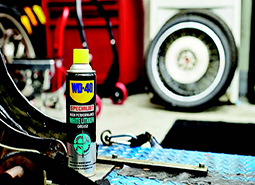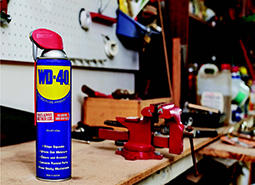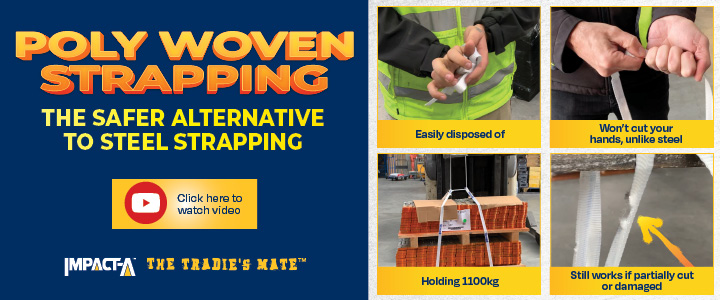WD-40 is found everywhere in our workshops, toolboxes and homes. Take a look at the fascinating story behind the humble blue and yellow can with the little red top.

Using WD-40 is a simple, tried and tested solution that works every time. A longstanding staple in our lives, nine out of ten Australians know what WD-40 is. Reaching for a can of this product is synonymous with getting the job done. From its name to its many purposes, take a look at the story of this remarkable product. Many people believe WD-40 got its name because that’s how many uses it has. If this were the case, it would more aptly be called WD-2000+.
The real story is that back in 1953, a team of chemical engineers at the Rocket Chemical Company in San Diego, California set out to create a line of rustprevention solvents and degreasers. Perfecting a water displacing formula that worked the way it was supposed to took 40 attempts. WD-40 stands for Water Displacement, 40th formula. The name we are now so familiar with is straight out of the lab book used by the chemists who developed the product.
WD-40’s original use was to protect the outer skins of the atlas missile fuel tanks from rust. A few years after it was created, Rocket Chemical Company founder and president Norm Larsen experimented with putting WD-40 into aerosol cans. His thinking was that consumers might find a use for the product in their home workshops and garages. In 1961 the first full truckload order for WD-40® was filled when employees came in on a Saturday to produce additional concentrate to meet the disaster needs of the victims of Hurricane Carla along the U.S. Gulf coast. WD- 40® was used to recondition flood and rain damaged vehicles and equipment. In Australia, it is produced locally, using what remains a highly guarded, top-secret formula.
There’s always another use
Tradies around the world grab a blue and yellow can of WD-40 to loosen rusty nuts and bolts, to protect machinery and to remove rust, among other things. Its official functions are to lubricate, clean, penetrate, protect and displace moisture.
Some of the lesser-known WD-40 capabilities include removing crayon from walls, getting chewing gum off footpaths (or out of hair), fixing a stuck zipper and even getting rid of bugs and debris from your car bonnet after an outback car trip. For heavy trade and industrial users, the product has so many uses, including helping lubricate cutting blades, drive moisture from drills, clean and protect tools, penetrating frozen parts and removing rust from concrete or tiles. As WD-40 Australia’s National Key Account Manager Brad Ray explains, “If you want something to stay put, you use duct tape. If you want it to move, WD-40 is the answer.”
WD-40 and friends
While WD-40 itself needs no introduction and is one of the most recognized products around the world, a lot of people don’t realise that there is a range of taskspecific products also available under the WD-40 Specialist brand.
The WD-40 Specialist range of products are specially formulated to make the toughest jobs easy and designed for heavy industrial users. This range includes a High- Performance White Lithium Grease, AntiFriction Dry PTFE Lubricant and a High-Performance Silicone Lubricant. There is also a Fast Acting Degreaser which works immediately on contact, plus a Fast Drying Contact Cleaner for cleaning electrical equipment.
WD-40 have recently launched a number of new and unique WD-40 Multipurpose products developed with the end-user in mind. Anyone trying to reach hard-to-access areas can grab a WD-40 EZ-Reach can with a flexible 20cm straw. This helpful attachment makes it easy to spray underneath sinks, around pipes or in other tricky spots. In addition, if you are using WD-40 in public places and don’t want to leave its distinctive smell lingering, the new WD-40 Low-Odour product is the answer. This has the same product functions and benefits—just with less smell.
With so many uses, the main goal of the team at WD-40 is to help people understand what the product can do. If you’re looking for inspiration, check the WD-40 website or reach out to your local CSS Member.
WD-40 and CSS
Brad Ray explains that WD-40 and CSS have been in partnership since 2013. “We formed our partnership to make accessing WD-40 easier for CSS Members and their customers.” He says. “All CSS members can order WD-40 products. We try to make things as convenient as possible for the people who use our products the most.”
One of the final points to remember about WD-40, and perhaps another reason why it is so recognisable is that it lasts almost indefinitely. If you have a can laying around the garage says Brad, give it a shake and you’re good to go.






